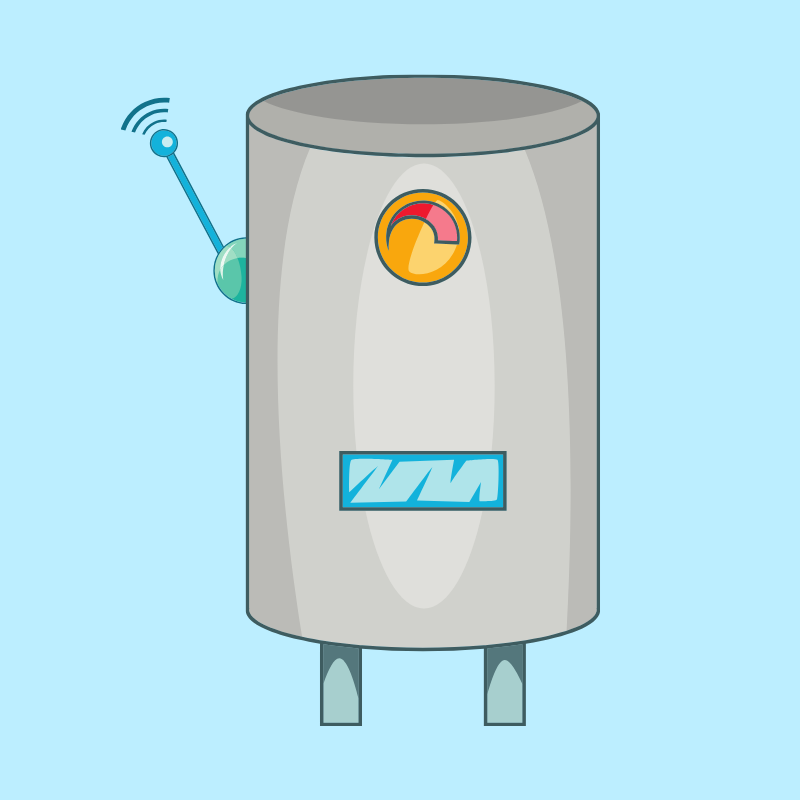Water heaters are installed in homes to heat the water used to bathe, cook, clean, and all the ways we use water to live. There are different types of water heaters but in this article, we will be discussing a traditional water heater as it is the type of heater that depends on an anode rod.
An anode rod is one component of a traditional tank-style water heater. The function of an anode rod is to attract certain minerals in the water such as calcium and magnesium to protect the internal parts of the heater from mineral buildup including the tank itself. Excess calcium and magnesium are commonly found in hard water.
There are several types of anode rods available with each version addressing different conditions found in the water supply. The majority of the rods should be replaced every 4-5 years to maximize the lifespan of the storage tank.
In this article, we will learn how a water heater anode rod performs as a ‘sacrificial lamb’ on behalf of your water heater. We will identify the 4 types of rods and discuss the conditions each type of rod addresses. We will show you how to determine if your rod needs replacing and outline the steps required to replace an anode rod. We highly recommend hiring a professional as it is not a DIY project and misinsertion of the rod can create serious damage to the water heater. Read further to learn everything you need to know about anode rods.
What Is An Anode Rod?
An anode rod is a steel wire that runs from the base of the water heater storage tank through the center to the top and can be wrapped in aluminum, an aluminum-zinc alloy, or magnesium. As water enters the heater, it possesses characteristics that potentially could promote rust and corrosion. There can be chemical reactions between minerals in the tank or the acidity of the water can be too high. Heat can speed up the rust and corrosion process as well.
To combat these processes, anode rods are installed to attract and capture minerals that are present in hard water. This reduces the likelihood that these minerals will negatively affect the lining of the storage tank.
How They Function
Through an electrochemical process, an anode rod attracts iron, limestone, and other minerals and begins to corrode as it protects your storage tank. As the rod erodes it releases electrons into the water tank which helps slow or stop erosion and sediment formation.
Water heaters are vulnerable to particles collecting at the bottom of the tank and to rust forming on its lining. The anode rod is the line of defense against a water heater tank failing and serves to extend the life of the tank provided the rod is replaced as needed.
Types of Anode Rods
The type of water supplied matters when deciding on what type of anode rod you should use. Here we will discuss 4 types and learn the function of each type.
Aluminum Rods
This type of anode rod is useful to combat cloudy water or water that is affected by sediment. Rods wrapped in aluminum are beneficial as barriers against high concentrations of minerals such as calcium and magnesium. They reduce the amount of sediment that finds its way to the floor of the water storage tank.
Magnesium Rod
If the water entering the water heater is hard, the use of this type of rod is discouraged. Instead, magnesium rods work best when the water is already soft.
Zinc-Anode Rod
If a sulfer bacteria is present in the water it will have a rotten egg smell. This bacteria is caused by decaying material that finds its way into groundwater. A zinc rod will help to eliminate this issue leaving behind clean, scentless water.
Powered Anode Rod
This is the only rod that will not need to be replaced as it can last the entire extended life of the heater in which it is installed. It works by sending waves of electricity through the water to scatter corrosive electrons from collecting on the lining of the tank.
Does My Water Heater Rod Need Replacing?
As stated earlier, an anode rod should be replaced every 4-5 years except for the powered anode. There are several factors that affect the water and the length of time best suited between replacements. These factors include:
-Water quality
-Type of rod used
-If there is a water softener in the home
-The amount of water used
-The pH level of the water
-The amount of sediment present in the water
A visual inspection of the water can help decide if the rod needs replacing. Discolored, rusty, or unpleasant-smelling water are possible signs but these steps can be taken to be certain.
Steps to Replace an Anode Rod
First, turn off the power, close the shutoff valve to the heater, and open a hot water tap to drain the system.Using a garden hose and bucket drain 3-4 gallons of water from the tank. If the removed water is rusty, full of sediment, or has a bad smell drain the remainder of the water tank. Finally, remove the six-sided screw to gain access to the anode rod and replace it.
It is highly recommended you contact a professional plumber such as ourselves to complete this replacement process. In inexperienced hands, the tank and water supply line can easily be damaged. Additionally, some manufacturer warranties can be voided if the replacement of the anode is not performed by a professional.
Call Us For Water Heater Services In Oklahoma!
An anode rod is a clever addition to a traditional tank-style water heater helping to extend the life of the heater by attracting the minerals found in water that can lead to rust and corrosion. We have discussed the different types of rods and how to determine whether a rod is corroded enough to deserve replacement. You now have all the information you need to be informed about anode rods and their replacement.
We offer hot water heater installations and maintenance schedules to help you keep your water heater operating to its fullest capacity. Regular replacement of your anode rod is a proactive way to extend the life of your hot water heater and to grant you peace of mind knowing you are doing everything possible to protect your water heater.
Contact our team today for all of your water heater problems!

